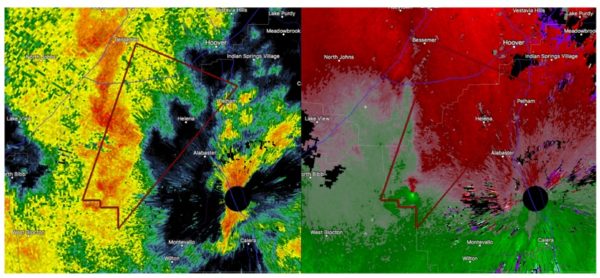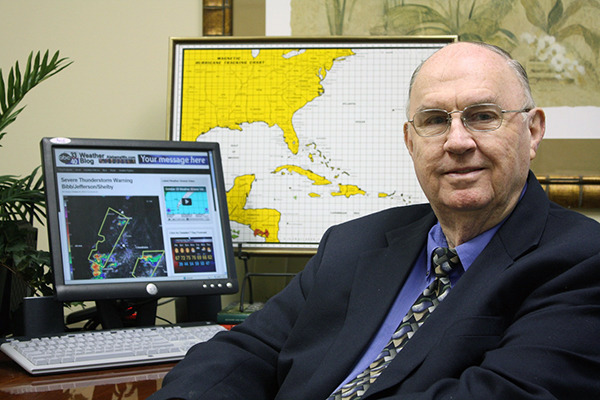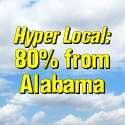Big Changes Coming to Jefferson County Outdoor Siren System
You can’t rely on an outdoor siren to warn you about a tornado. You have heard us say that over and over. But they are one part of the warning communication process, alerting people who happen to be outdoors within earshot of one of them.
An outdoor siren can’t usually wake you from sleep or notify you in your closed up, air-conditioned home or office with lots of sound sources and distractions.
And one major limitation has been that warnings for any part of Jefferson County triggered all 254 sirens across the county since there was no way to specifically activate only the sirens which are in the threat area.
Until October 2007, severe weather warnings, including tornado, severe thunderstorm, flash flood and areal flood warnings, were issued for entire counties. At that time, severe weather warnings swapped to a more precise “polygon-based” storm-based warning system, where warnings are defined as compact polygons that are not dependent on county borders.
The smaller warnings allow the National Weather Service and the rest of the weather enterprise to target the areas which storms are expected to impact. For example, a severe thunderstorm traveling along I-59 from Bessemer to Hoover to Liberty Park used to trigger a warning for all of Jefferson County. Now a narrow polygon greatly reduces the number of people that are included in the warning.
Like most siren systems, NOAA WeatherRadio continues to be county-based as well. This means that people in Warrior, Downtown and Roebuck would hear sirens and have their WeatherRadios sound even though they were not in the actual warning. This results in confusion and overwarning and causes people to confirm the situation when they should be taking action if they are in the polygon, and interrupts their activities if they aren’t.
But Jefferson County is taking steps to rectify that situation for their outdoor warning sirens.
Today, the Jefferson County Emergency Management Agency signed a contract to upgrade their outdoor warning siren activations to be based on National Weather Service polygons. No longer will all 254 outdoor sirens across the county sound when there is a tornado warning for just a portion of the county.
In the image below, you can see the red outlined area of rotation within a storm; this area represents an actual tornado warning issued for Jefferson County, Alabama in late 2017. At that time, all 254 sirens across the entire county were activated. If the new system had been in place at that time, approximately 15 sirens located within the polygon warning area would have been activated. No other sirens would have sounded since the warning was only for that particular part of the county.
The new contract also allows for automated siren activations and will have redundant systems for receiving the warnings. The announcement from Jefferson County EMA Director Jim Coker also covered inspections and preventive maintenance programs.
It will take two to three months for the system to be up and running. We will have updates on the progress of the upgrade here on AlabamaWX.
According to Chris Tate, who is an Emergency Management Officer with the Jefferson County EMA, “This has long been a goal of the EMA, and much needed for our area. The system is one used in other counties around Alabama and the southeast, called WeatherWarn.” Weather Warn is a fantastic product developed by Danny Lloyd of Harpersville, who also developed the Weather Message system we use here at AlabamaWX for our warning posts.
While this is a step in the right direction, the EMA, James and the rest of us in the warning enterprise continue to urge you not to rely on sirens as your sole source of warning notification. Always have at least two ways of getting your weather warnings wherever you are, and have a plan for taking action immediately when you are notified that you are in one.
Important ways of receiving warning notifications are NOAA WeatherRadio, weather warning apps like MyWARN and Weatheradio by WDT, and calling systems like WeatherCall. Cell phone systems deliver selected warnings, including tornado and flash flood warnings to smartphones via the government’s WEA system. Systems like MyWARN and WDT only deliver the notifications to their users that are inside the warning polygon. WEA Alerts attempt to do that but sometimes bleed outside the polygon since cell towers cover a geographic area that can extend beyond the polygon.
Of course, the AlabamaWX blog provides full-time coverage of warning situations, delivering warnings directly in seconds after they are issued and James provides live wall to wall coverage on ABC3340 during any tornado warning in the Birmingham television coverage area.
Be ready. Be warned.
Category: Alabama's Weather, ALL POSTS

















